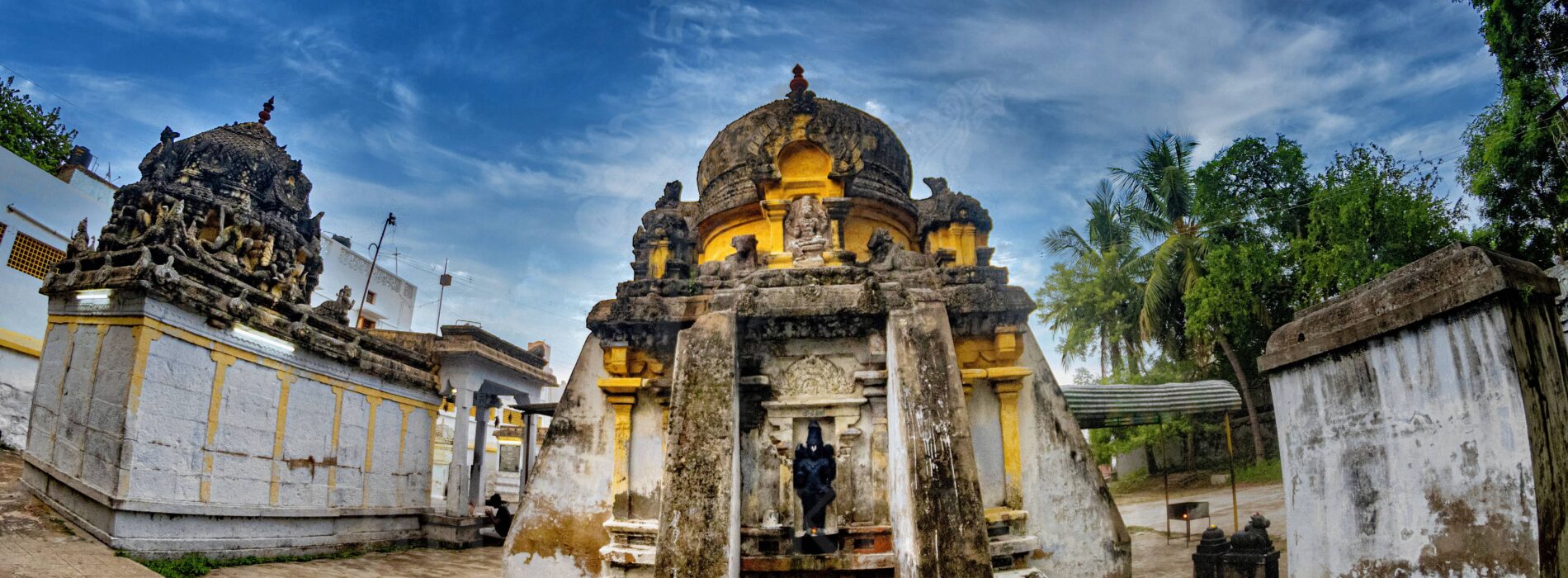Panamudishvarar Temple
Serpent Guardians and Divine Grace
The serene realm of Panamudishvarar Temple, a sacred abode nestled along the northern bank of the Vegavati River in Kanchipuram. We embark on a spiritual journey to unravel the legends, architectural wonders, and divine connections associated with this ancient temple. From the worship of Nagas to the serpent guardians that protect the temple, prepare to be captivated by the mystical allure of Panamudishvarar.
The Legend of Naga Worship
Panamudishvarar Temple holds a profound connection with Naga worship, as per the sthalapurana (local legend). It is believed that the temple served as a sanctuary for the Nagas, who sought relief from their fear of Garuda, the celestial bird. This sacred haven became a place of solace and reverence, intertwining the serpentine deities with the divine grace of Lord Shiva.
Phanadharishvara: The Lord of Serpents
At Panamudishvarar Temple, Lord Shiva is worshipped as Phanadharishvara, which translates to “the one who wears snakes as ornaments.” The name derives from “phana” meaning hood and “phanadhara” referring to the serpents with hoods. Explore the significance of this unique epithet and the portrayal of Lord Shiva adorned by serpents within the temple complex.
Architectural Marvels
The temple structure, facing east, boasts a two-tier Rajagopura, welcoming devotees into its sacred premises. Its layout encompasses a garbhagrha, antarala, ardha-mandapa, and maha-mandapa. The garbhagrha stands on a simple padabandha adhisthana adorned with tripatta kumuda. Discover the artistry of the sandstone sculptures within the koshtas surrounding the garbhagrha, depicting deities such as Ganesha, Dakshinamurti, Mahavishnu, Brahma, and Durga. Explore the separate shrines within the ardha-mandapa, dedicated to various divine beings like Nataraja, Siddhishvara, Varasiddhi Vinayaka, Kalahastishvara, Sri Valli Devasena Subramanya, Navagrahas, Shanishvara, Mahavishnu, Bhairava, and Surya.
Serpent Guardians and Spiritual Remedies
Panamudishvarar Temple is closely associated with sarpa-dosha parihara, providing solace to those seeking remedies for afflictions related to serpents. It is also considered a Raghu & Kethu Parihara sthala. The temple houses two additional lingas, Rahulinga and Ketulinga, which are believed to transform into snakes during the night, acting as vigilant guardians of the sacred space.
Tales of Divine Offerings
According to another captivating legend, Vasuki, one of the revered Ashtanaga (eight sacred snakes), worshipped Lord Shiva in this temple, offering Nagamani (serpentine gems) from his hoods. Delve into the significance of this divine offering and the enduring bond between Lord Shiva and the serpentine deities.
Historical Significance
Panamudishvarar Temple holds historical significance, attributed to its construction during the 10th century under the patronage of Sundara Chola, a mighty ruler of the Chola dynasty. Scholars believe that the temple’s present structure reflects the architectural finesse of that era. Explore the inscriptions found on the north side wall of the mandapam, dating back to the 12th century, which reverently refer to Lord Shiva as ‘Padamudaya Nayanar.’
Conclusion
As we conclude our exploration of Panamudishvarar Temple, we leave behind the tranquil ambiance, the ancient legends, and the architectural splendor that make this sacred site truly remarkable. From the devotion of the Nagas to the divine grace of Phanadharishvara, this temple continues to be a haven of spirituality and protection. Join us as we embrace the mystical embrace of Panamudishvarar, where serpents and gods converge in eternal harmony.




